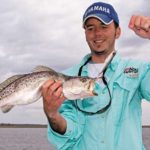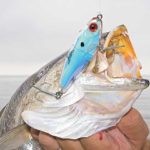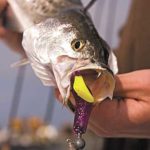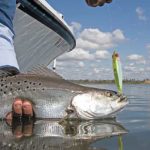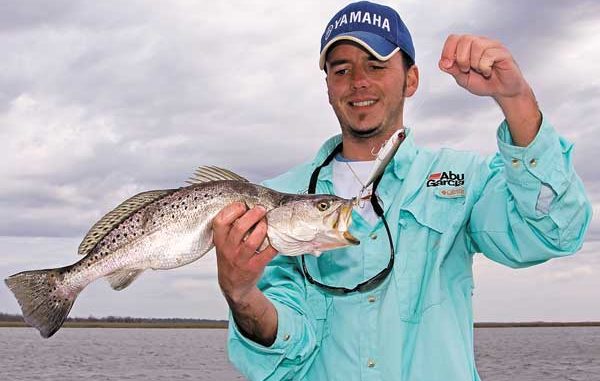
The biggest problem facing Leeville anglers this month is selecting among so many great options.
Every now and then, I’ll walk through the room while my wife is watching HTGV and see some property virgins making a $500,000 offer for a three-bedroom house.
As they cut away from the lucky homebuyers to show the house, I’m always left wondering what in the world they were smoking right before they made their offer.
“Idiots,” I mummer under my breath as I leave the room.
“But the house is in California,” my wife shoots back.
“Like I said,” I retort realizing, but not wanting to admit, that she has a point.
Location, location, location — it’s the most widely used phrase in the real-estate world because it pithily explains why smaller properties in desirable locations command a higher selling price than properties five times the size in less-desirable locations.
What makes something a good location as opposed to bad? The answer is often in the eye of the buyer. However, as it pertains to a business, there are certain characteristics that define what makes a property a good location.
Make no mistake about it: The right location can be a major factor in a business’s success or failure. Pick the right spot, and customers will flock through your doors. Pick the wrong one, and you will wither on the vine.
It just so happens that Leeville couldn’t be in a better location. Leeville is the right spot for the same reason a hotel close to an attraction is more expensive. Leeville is the right spot for the same reason a corner property at an intersection is more expensive. And Leeville is the right spot for the same reason that little house in California sold for $500,000.
“Location, location, location,” said Bobby Gros, owner of Bobby Lynn’s Marina in Leeville. “What’s advantageous about fishing out of Leeville during the spring is that the speckled trout from up north are moving south to the bays while the trout from the Gulf Of Mexico are moving north.
“They’ll eventually all kind of meet in the middle around June, but for April, they’re coming at us from two different directions. The best fishing is the extreme south or the extreme north, and Leeville is close to both. In fact, Leeville is close to everything. From here, you’re just minutes away from all the best spots to the west, south and east.”
Before selecting a direction to fish, Gros says it’s important to realize just what April means for anglers heading out of Leeville. First off, April means the first wave of spring spawning trout, and the best places to find these fish are the structures like oyster reefs that are close to 5 or 6 feet of water.
The trout haven’t moved up to shallow water yet, and they look for structures that they can move up onto and spawn then move right back down into the deeper water. Gros pointed out that some examples of this situation are the channel at Belle Pass, the rocks out at Timbalier and the big platforms out in the bays.
“Those are the normal places where speckled trout congregate first,” Gros said. “And these are primarily our bigger trout. We don’t get a whole lot of smaller fish, and the large schools of smaller fish just aren’t what you target during April. We target bigger trout with lots of 2- to 2 1/2-pound fish or larger. Our big trout this month would be anywhere from 5 to 7 pounds.”
Heading to the east, Gros pointed to Palmetto Bayou just to the northeast of Bay Rambo as a good spot to the extreme north that offers this deep water and shallow water combination. Palmetto also serves as a good funnel for fish that are moving south from the marshes to the north.
Moving to southeast of Leeville, Gros says anglers should skip all the middle bays and head to the extreme southern hot spot around Caminada Pass or the front side of the Grand Isle jetties. These rocks are just about dead center on the island on the beach side, and they frequently hold good trout that move up from the Gulf.
“You could also try some spots at the north end of Caminada Bay,” Gros suggested. “During April, the middle of our bays aren’t very productive. That’s why anglers should fish either the channels coming out to the north of Caminada or the beaches at the bottom.”
Leaving Leeville and running down Bayou Lafourche leads to Belle Pass, which is actually the mouth of Bayou Lafourche as it dumps into the Gulf of Mexico. Leaving Belle Pass, anglers can reach some of the most productive fishing in all of coastal Louisiana by fishing the beaches to the east of Belle Pass just below Fourchon or to the west by fishing the beaches on the Gulf side of the Timbalier Islands.
Gros recommended anglers heading to East or West Timbalier should focus on the beach side because they produce a lot better during April than the inside of the islands do, as this is the first spot trout moving in from the Gulf of Mexico hit as they move in to spawn.
“That entire area from the Timbalier Islands to the beaches to the east of Belle Pass is just phenomenal this time of year,” Gros said. “The beaches to the east are really good if we’re getting a lot wind from the west, but that entire stretch from Penrod Slip (the first cut between Belle Pass and East Timbalier) on to West Timbalier is just as good.
“At one time, Penrod Slip was a small, deep channel, but now it’s a lot shallower and a lot wider. But on the beach side, it still drops off fairly hard, and it holds lots of decent trout. The key to fishing all this area is to look for moving bait along the beach — mullet, pogies. Lots of times, the fish sit right under the bait on the beach side.”
Anglers heading to the west of Leeville can find speckled trout at the extreme north side of Lake Raccourci and Grey Duck Lake. Very much like Palmetto Bayou to the east, this area is a spot through which trout moving south from the marsh will move, and it offers that good combination of deep and shallow water.
Wherever you fish out of Leeville this time of year, Gros says it’s hard to beat live bait. He recommended fishing live croakers, pogies or cocahoes on Carolina rigs to keep the bait near the bottom where the large trout are likely to be. Although he doesn’t discount artificial baits for April, he simply believes that live bait gives most anglers the best chance at catching trout.
“You’re looking for live baitfish rather than shrimp during April,” Gros pointed out. “The shrimp haven’t moved in, so the fish aren’t feeding on shrimp. I’m not saying you won’t catch them on shrimp, but that’s not what the fish are feeding on this time of year.”
As for artificial lures, Gros explained that fishing dark-colored soft plastics, like the glass minnow Saltwater Assassin Sea Shad or a black with silver flake sparkle beetle, works well when tightlined on the bottom.
“Also keep in mind that the topwater bite can turn on in any of these areas after a good week or so of warm weather,” Gros said. “We’ve got to get the surface temperature up to get those big trout on the surface. If it happens, you can catch fish on the darker-colored MirrOlure like the Top Dog and She Dog. Save the brighter colors for later in the month or early May.”
Don’t forget about the suspending hard baits, either. Baits like the MirrOlure Catch 2000 and MirrOdine are perfect for fishing the beaches for the larger trout that might be a little lethargic. The suspending baits allow you to get your lure down and stop it right in front of their faces.
Although Leeville is the perfect location for launching an April speckled trout fishing trip, Gros understands that there might be one problem with it.
“We almost have too many options,” he said. “Sometimes you wake up in the morning and wonder where to go because there are a thousand places to fish.”
Too many options? In the business world, that might be a problem. However, in the speckled trout fishing world, lots of options can mean lots of fish. And giving your customers what they want is the best way to keep them coming back — that and having a great location like Leeville.
